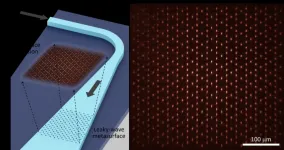The study uses a newly extended record of “dynamic ocean topography” satellite data from 2011-2019 provided by two of the co-authors, along with an extensive hydrographic dataset from 2003-2019, to quantify the changing sea surface height of the gyre in recent years.
Previous observations and modeling that relied on earlier dynamic ocean topography data up to 2014 have documented that the gyre has strengthened and increased its freshwater content by 40% compared with 1970s climatology. Stabilization of the gyre could be a precursor of a huge freshwater release, which could have significant ramifications including impacting the Atlantic Meridional Overturning Circulation (AMOC), a key component of global climate.
The Beaufort Gyre “has transitioned to a quasi-stable state in which the increase in sea surface height of the gyre has slowed and the freshwater content has plateaued. In addition, the cold halocline layer, which isolates the warm/salty Atlantic water at depth, has thinned significantly due to less input of cold and salty water stemming from the Pacific Ocean and the Chukchi Sea shelf, together with greater entrainment of lighter water from the eastern Beaufort Sea. This recent transition of the Beaufort Gyre is associated with a southeastward shift in its location as a result of variation in the regional wind forcing,” according to the journal article “Recent state transition of the Arctic Ocean’s Beaufort Gyre,” published in Nature Geoscience.
“Our results imply that continued thinning of the cold halocline layer could modulate the present stable state, allowing for a freshwater release,” the article states. “This in turn could freshen the subpolar North Atlantic, impacting the AMOC.”
Because there could be many potential local and remote impacts of the changing gyre on the hydrographic structure, physical processes, and ecosystem of the Arctic, “it is of high interest to better understand the factors associated with such changes—including the underlying causes,” the article notes.
“People should be aware that changes in the circulation of the Arctic Ocean could threaten the climate. It’s not only the melting ice and animals losing their habitat that should be a concern,” said Peigen Lin, lead author of the paper. Lin, who is an associate professor at the Shanghai Jiao Tong University’s School of Oceanography in China, conducted his research as a postdoctoral investigator at the Woods Hole Oceanographic Institution (WHOI) in Massachusetts.
With the gyre being the Arctic Ocean’s largest freshwater reservoir, “if that freshwater gets released and ends up spreading into the North Atlantic, it could impact the overturning circulation, and, in an extreme case, disrupt it,” said co-author Robert Pickart, a senior scientist in WHOI’s Department of Physical Oceanography.
The study, which includes an examination of long-term trends of the Beaufort Gyre and the causes of the thinning of the cold halocline layer, quantifies the evolution of the gyre in terms of its sea surface height as well as its freshwater content. “Both of these indicate that the Beaufort Gyre has stabilized in the second decade of this century,” Lin said.
The study also addresses the causes of the halocline thinning considerably as the gyre has evolved. The study notes that the recent decrease in the amount of Pacific origin winter water exiting the Chukchi Sea explains some of the thinning, and that the enhanced influence from the eastern Beaufort Sea – due to the gyre’s southeastward shift– likely also contributes to the thinning.
The recent documented state of the gyre “does not represent a return to the initial condition of 2003 when the gyre was weak and located partially in the southeastern basin. Instead, under the strengthened wind stress curl, the gyre has continuously intensified even though it has contracted, and it has maintained its excess freshwater storage,” the article notes.
Lin said a goal regarding the gyre is to understand the mechanisms behind its changes, which ultimately could allow scientists to predict what the gyre might do in the future.
“The community has been confounded by the fact that this gyre has kept growing and growing, and everyone is expecting it to release,” Pickart said. “Wouldn't it be something if the gyre system and its freshwater accumulation and release could be become somewhat predictable? Then, perhaps, we could also shed light on what a warming climate is going to do to this system.”
Funding for the study was provided by the National Science Foundation; the National Oceanic and Atmospheric Administration; the Shanghai Pujiang Program and Shanghai Frontiers Science Center of Polar Science; the European Space Agency Project and Natural Environment Research Council; the Arctic Challenge for Sustainability projects of the Ministry of Education, Culture, Sports, Science and Technology, Japan; and the Arctic Challenge for Sustainability II (ArCS II). Co-authors Harry Heorton and Michel Tsamados of University College London provided the updated dynamic ocean topography data from 2011-2019 for the study. Co-authors Motoyo Itoh and Takashi Kikuchi of the Japan Agency for Marine-Earth Science and Technology (JAMSTEC) provided the mooring data regarding the Beaufort Gyre source water.
###
Authors: Peigen Lin1,2, Robert S. Pickart2, Harry Heorton3, Michel Tsamados3, Motoyo Itoh4, and Takashi Kikuchi4
Affiliations:
1School of Oceanography, Shanghai Jiao Tong University, China
2Woods Hole Oceanographic Institution, Woods Hole, MA, USA
3Department of Earth Sciences, Centre for Polar Observation and Modelling, University College London, UK
4Institute of Arctic Climate and Environment Research, Japan Agency for Marine-Earth Science and Technology, Yokosuka, Japan
About Woods Hole Oceanographic Institution
The Woods Hole Oceanographic Institution (WHOI) is a private, non-profit organization on Cape Cod, Massachusetts, dedicated to marine research, engineering, and higher education. Established in 1930, its primary mission is to understand the ocean and its interaction with the Earth as a whole, and to communicate an understanding of the ocean’s role in the changing global environment. WHOI’s pioneering discoveries stem from an ideal combination of science and engineering—one that has made it one of the most trusted and technically advanced leaders in basic and applied ocean research and exploration anywhere. WHOI is known for its multidisciplinary approach, superior ship operations, and unparalleled deep-sea robotics capabilities. We play a leading role in ocean observation and operate the most extensive suite of data-gathering platforms in the world. Top scientists, engineers, and students collaborate on more than 800 concurrent projects worldwide—both above and below the waves—pushing the boundaries of knowledge and possibility. For more information, please visit www.whoi.edu
Key takeaways:
• This new study provides the first observational evidence of the stabilization of the anti-cyclonic Beaufort Gyre, which is the dominant circulation of the Canada Basin and the largest freshwater reservoir in the Arctic Ocean.
• The study uses new updated dynamic ocean topography data from 2011-2019 provided by several study co-authors, along with an extensive hydrographic dataset from 2003-2019, to quantify the changing surface height of the gyre in recent years.
• Stabilization of the gyre could be a precursor of a huge freshwater release, which could have significant ramifications including impacting the Atlantic Meridional Overturning Circulation, a key component of global climate.
• “People should be aware that changes in the circulation of the Arctic Ocean could threaten the climate. It’s not only the melting ice and animals losing their habitat that should be a concern.”
• A future goal regarding the gyre is to understand the mechanisms behind its changes, which ultimately could allo
END





